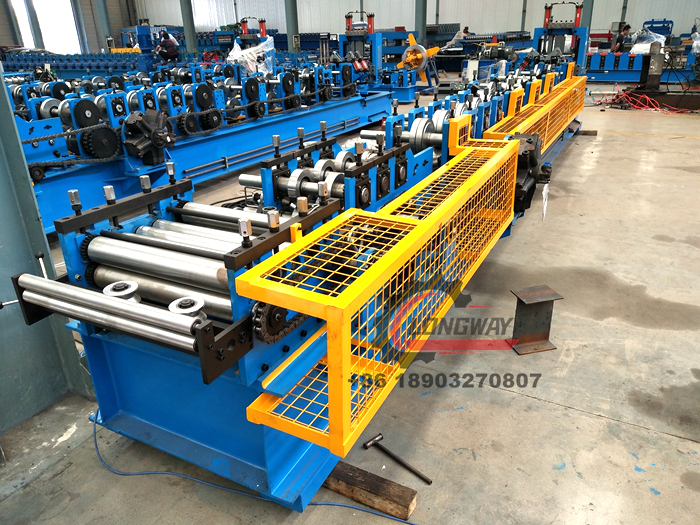Custom Metal Roof Ridge Cap Production Machine for Efficient Roll Forming Solutions
The Role of Custom Metal Roof Ridge Cap Roll Forming Machines in Modern Construction
In the dynamic world of construction, the demand for durable and aesthetically appealing roofing solutions has never been higher. Among the various components that contribute to the integrity and appearance of a roof, the ridge cap stands out. This critical element not only protects the seams of roof panels but also enhances the overall visual appeal of a structure. To meet these needs, custom metal roof ridge cap roll forming machines have emerged as essential tools in the roofing industry, enabling manufacturers to produce tailored solutions for diverse architectural requirements.
Understanding Ridge Caps
Ridge caps are the finishing touch that can make or break the look of a roof. They are installed at the peak where two slopes meet, providing both a barrier against water infiltration and a stylish transition between different roofing materials. The significance of ridge caps extends beyond aesthetics; they contribute to a roof's overall longevity by preventing moisture accumulation and protecting vulnerable areas from the elements.
The Advantage of Customization
One of the primary benefits of using a roll forming machine for ridge caps is the ability to create custom designs. Different architectural styles require varying profiles and shapes, which can be effectively produced using a roll forming machine. Whether it’s a standing seam design for modern buildings or a more traditional profile for classic homes, these machines allow manufacturers to adapt product offerings based on customer specifications.
How Roll Forming Machines Work
Roll forming is a continuous bending operation in which metal sheets are fed through a series of rollers. Each set of rollers progressively shapes the metal into the desired profile. For ridge cap manufacturing, specialized machinery is designed to create not only the primary shape of the ridge cap but also to incorporate features such as stiffening ribs, bends, and folds that add strength and improve water drainage.
custom metal roof ridge cap roll forming machine

The process begins with selecting the appropriate metal, typically galvanized steel or aluminum, to withstand environmental stresses. The metal sheet is then fed into the roll forming machine, where it undergoes a sequence of forming operations. This process can be highly automated, allowing for efficient mass production while ensuring high precision and reduced wastage. In addition, modern machines are often equipped with advanced technology that enables real-time monitoring of the forming process, ensuring consistent quality throughout production.
Efficiency and Cost-effectiveness
One of the distinguishing features of using roll forming machines for manufacturing ridge caps is their efficiency. Traditional methods of production can be time-consuming and labor-intensive, but roll forming allows for a quicker turnaround, significantly increasing output and reducing labor costs. This efficiency is particularly beneficial for businesses looking to meet tight deadlines or fulfill large orders without compromising on quality.
Furthermore, since roll forming machines can produce ridge caps with minimal scrap material, they contribute to a more sustainable manufacturing process. This environmentally-friendly approach not only appeals to eco-conscious consumers but also helps manufacturers reduce overall costs.
The Future of Roofing Solutions
The roofing industry continues to evolve, driven by advancements in technology and changing consumer preferences. As architects and builders increasingly seek customizable and high-quality roofing solutions, the significance of custom metal roof ridge cap roll forming machines will undoubtedly grow. The capability to swiftly produce tailored products that meet specific architectural requirements positions these machines as invaluable assets to manufacturers.
In conclusion, custom metal roof ridge cap roll forming machines play a pivotal role in the construction industry by enabling the production of high-quality, customized ridge caps. These machines provide an efficient, cost-effective, and sustainable approach to roofing solutions that meet the diverse needs of modern architecture. As the construction landscape continues to evolve, their role will become increasingly significant, ensuring that buildings not only stand robust against the elements but also look aesthetically pleasing in their design.
-
Roof Panel Machines: Buying Guide, Types, and PricingNewsJul.04, 2025
-
Purlin Machines: Types, Features, and Pricing GuideNewsJul.04, 2025
-
Metal Embossing Machines: Types, Applications, and Buying GuideNewsJul.04, 2025
-
Gutter Machines: Features, Types, and Cost BreakdownNewsJul.04, 2025
-
Cut to Length Line: Overview, Equipment, and Buying GuideNewsJul.04, 2025
-
Auto Stacker: Features, Applications, and Cost BreakdownNewsJul.04, 2025
-
Top Drywall Profile Machine Models for SaleNewsJun.05, 2025








